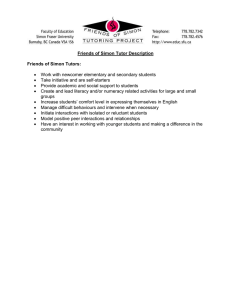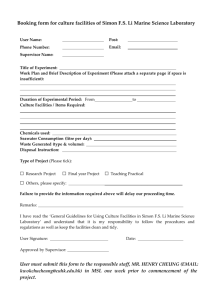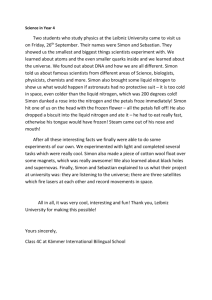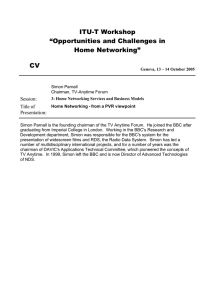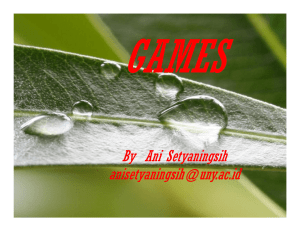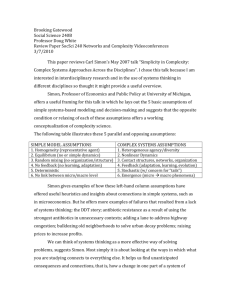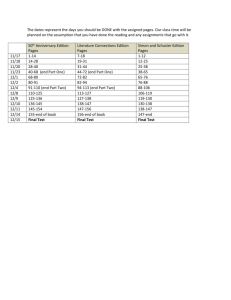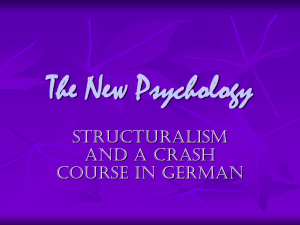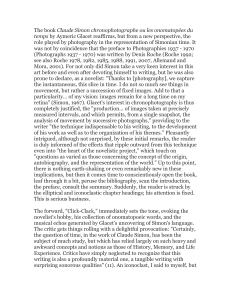simon-chapter
advertisement
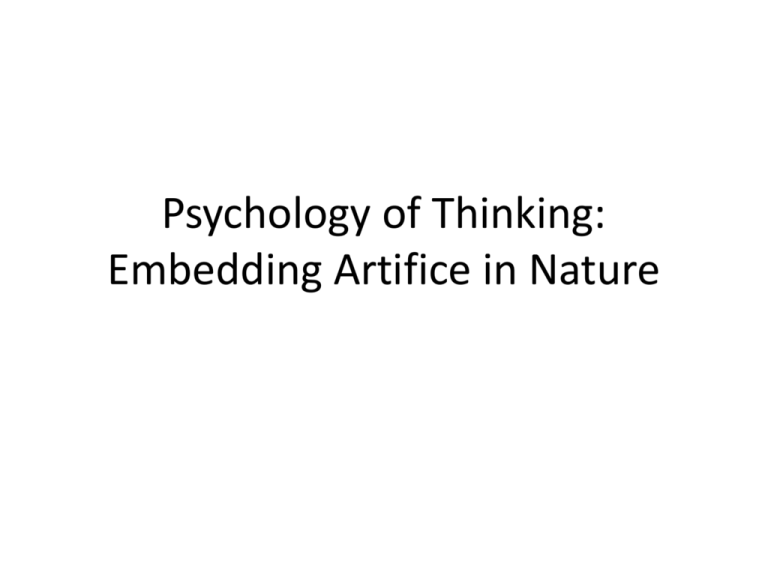
Psychology of Thinking: Embedding Artifice in Nature Perceived Complexity • Many things that appear complex are result of simple mechanism acting on a complex environment • Consider the path of ant on seashore or skier on mountain slope – Path might be mistaken for a student’s path through problem/solution space when solving a complex problem • Complexity largely due to not being able to anticipate obstacles Perceived Complexity • “An ant, viewed as a behaving system, is quite simple.” • Controversial hypothesis? – “Human beings [minus emotions and memories], viewed as behaving systems, are quite simple.” • Do you believe Simon? • Why does Simon believe this? • How does it relate to theory of computing? Understanding Thinking • Examine results from cognitive psychology – What do they tell us about capabilities? – What do they tell us about limits? • Look at – Problem solving – Concept attainment – Memory skills – Natural language processing Problem Solving as Search • Generalizing search (e.g. cryptoarithmetic problems) – Brute force solutions – Pruning tree based on contradictions – Algebraic solution based on design constraints • “the more sophisticated the search strategy, the less search was required” Problem Solving as Search • My take: the more domain knowledge applied, the less search is required – Is search the right word? – Generate and test vs. compute value • People change strategies – is this just searching for a search strategy? • Lesson: watching people solve problems can provide information about cognitive processes Concept Attainment • Example with cards – Determining which cards show things in a class of items and which are not in the class – Experiments show • People do not always discover strategies that could be taught • People do not have sufficient memory unless process is slowed down • 7 +/- 2 elements in short-term memory • 5-10 seconds to move chunk to long-term Patterns in Experimental Results • Problem in reporting experimental results in variety of metrics – # of trials, # of errors, time to criterion • Learn unrelated nonsense syllables (Task A) – 10-15 seconds each • Learn unrelated words or related nonsense syllables – 1/3 time of Task A • Learn continuous prose – 1/10 time of Task A • Modeling experience with EPAM – Approximately predicts times found in studies • Simon suggests 2 chunks of short-term memory – Only 7 to 10 if no interruptions to task Organization of Memory • Recall of randomized characters show chunking (at multiple levels) – Three to four at each level? – Simon hypothesizes list structure (LISP) • Recall of chess boards – All are slow on randomly placed chess pieces – Experts faster on boards that made sense • In practice, problem solving occurs in a combinations of verbal, mathematical, and diagramatic reasoning • Potential issues with Simon’s interpretation – Simple problems -> simple solutions – What about perception? Natural Language Processing • Connection between transformational linguistics and information-processing psychology • I saw the man on the hill with the telescope – SAW ((I, WITH (telescope)), (man, ON (hill))) • Only the expressible thinkable? (vice versa?) What does it mean to know? • Searle’s Chinese Room Lessons / Summary • “the system is basically serial in its operation” – Do you agree? – Where is this true? Where might it be false? • Experimental work can provide insight into cognitive processes • “we should not expect it [cognition] to become essentially more complex” – Why not? Should we expect for it to remain simple?
